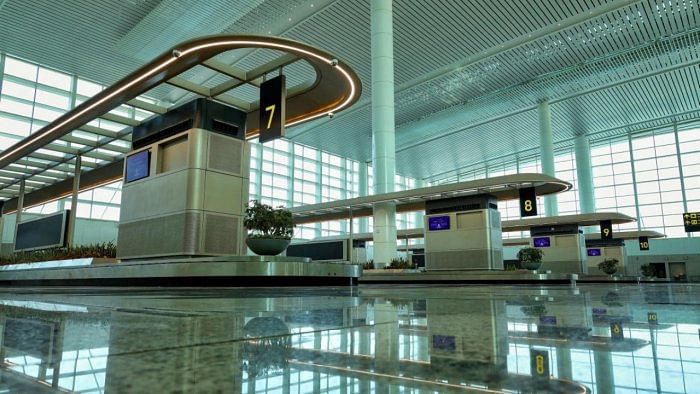
With long queues and waiting period for passengers at the Delhi airport, civil aviation ministry officials on Saturday said an action plan is being implemented to address the congestion, including reducing the number of peak hour departures to 14.
Many passengers took to social media to complain about long waiting hours and some also shared pictures of long queues at Terminal 3 (T3) of the Indira Gandhi International Airport (IGIA).
The officials said that a four-point action plan has been drawn up by airport operator Delhi International Airport Ltd (DIAL) and the ministry to put in place immediate remedial measures such as increasing the number of X-ray screening systems to 16 from 14 at present.
Discussions are also going on with domestic airlines to reduce the number of flights operated during peak hours at the airport, especially at T3.
According to the officials, the effort is to progressively reduce the number of peak hour departures to 14.
A spokesperson for the airport operator DIAL on Saturday said it is working constantly with the stakeholders -- CISF and Immigration -- to cope with the demand which includes deployment of additional systems and manpower.
The spokesperson said the number of departures during the peak hours at T3 has declined from 22 during the pre-pandemic period to 19 in November, and discussions are on to look at further reducing the flight numbers.
IGIA, also the country's largest airport, has three terminals -- T1, T2 and T3. All international flights as well as some domestic services operate from T3. On an average, it handles around 1.90 lakh passengers and about 1,200 flights daily.
The officials said discussions are also going on with airlines to reduce the number of flights during peak hours at the three terminals. The effort is to have 14 flights at T3, 11 in T2 and 8 in T1 during these hours, they added.
The peak hours are from 5 am to 9 am and 4 pm to 8 pm.
Among other measures, the officials said the reserve lounge would be demolished and two entry points at Gate 1A and Gate 8B at T3 would be converted for passenger usage.
"We have deployed additional manpower to guide passengers, especially at the key choke points and shifted one additional X-Ray machine. Additional manpower requirements will also have to be addressed by all stakeholders, including CISF and Immigration, to further improve the situation," the DIAL spokesperson said in a statement.
Besides, DIAL is leveraging technology, wherever possible, like use of AI-based passenger tracking system for proactive monitoring and messaging to passengers and airport employees on waiting time. In future, the implementation of DigiYatra should also help reduce the waiting time, the statement said.
In the last two days, the officials said DIAL has taken various steps such as having additional traffic martials at the departure forecourt of T3 to avoid vehicular congestion.
Besides, dedicated people have been deployed at the entry gates to help passengers.
The officials said an additional X-ray machine has been installed at T3 domestic and more manpower has been deployed in the ATRS (Automatic Tray Retrieval System) area to help passengers for tray preparation and congestion management.
Awareness posters have also been put at the entry gates to make sure that passengers are ready with boarding cards.
On December 7, Civil Aviation Minister Jyotiraditya Scindia held a detailed discussion with heads of all major Indian airports, CISF and immigration officials on capacities deployed. The discussion was also on the capacities required at every point to process domestic and international passengers smoothly through the peak travel season.
During the meeting, various initiatives, including plans for peak hour capacity-based on passenger processing capacity at each airport, were also discussed.
On Saturday, the DIAL spokesperson also said that new infrastructure and facilities are being created under phase 3A expansion plan such as opening of new Terminal 1 (T1) arrivals and phased opening of integrated T1.